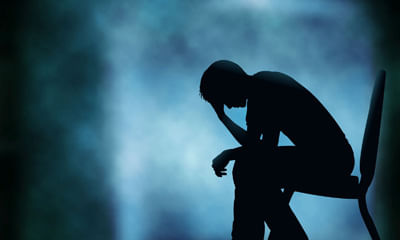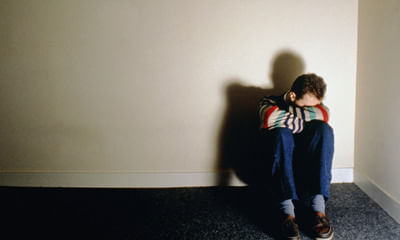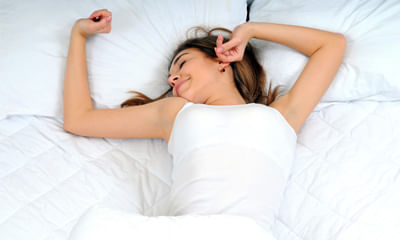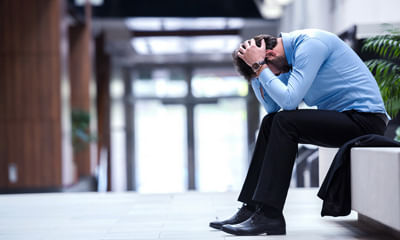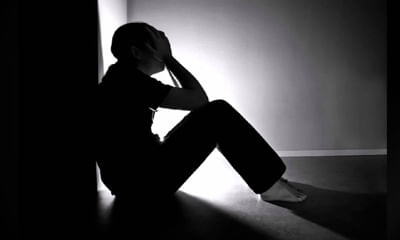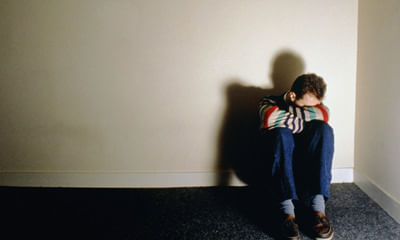Sinking Feeling In Chest
Hey! doctor i'm 21 years old two days ago I feel difficulty in breathing like dyspnea and some episodes of sinking of he ...
Ask Free Question
Yes, you are right. These problems are due to your bad sleeping and eating routine from past month.
I am observing anxiety related chest pain from a pretty long time now, the moment I get any fear or any confusion or any ...
Ask Free Question
Even if you think the chest pain is due to anxiety, please go for a thorough medical checkup to rule out any other developing problem. This is abnormal fear and it could do with some contribution from your upbringing. Perhaps you experienced strict parenting; or you were intimidated by dire consequences for failure; perhaps you were brought up believing that you were not as good as others; perhaps you were forced to show undue regard for elders and felt inferior around them, etc. You must immediately seek help from a counselor. In the meantime you must do certain things to build your constitution physically, spiritually, emotionally, and mentally. Mental stability can be achieved by learning a few skills in handling emotions in an appropriate manner. Stress management skills, which have a lot to do with expressing emotions, will need to be a major part of your recovery program. Emotionally you need the help of a counselor and that will help you tremendously to move from anxiety to normal fear. Please persevere and cooperate through all the support you need and you will come through successfully. Develop your body’s health by physical fitness through exercise, good rest (sleep), and a proper diet. Any way what you need to focus on is to do vigorous exercise of the aerobic kind for the heart’s fitness; meditation for the brain’s fitness; sleep for a well rested mind and body; a sound spiritual well being for good confidence and stability; and a diet with lots of vegetables, fruits, and whole grains. Vigorous exercise, especially of the callisthenic kind, will make your heart, which is a muscle, grow larger; and then your heart will need to beat less often and you will respond to the anxiety with a calmer disposition. If your mind, constitution, and your emotions are in check and fit, you will never be disturbed again. You need to attend personality development courses, personal grooming courses, conversational skills courses, and definitely a good education will empower you to boost self-confidence and by default self-image. Learn never to compare yourself with others: you are unique and there is only one of your kind, ever. If you let that sink in and appreciate who you are truly, you will go places.
I am depressed since my fiance broke up in a single day after a live in relationship of 13 months showing ignorance has ...
Ask Free Question
7 Yoga Poses That Will Help You Fight Depression Some days, you dread getting up in the morning and facing the world. Hopelessness takes over, and you feel empty. If this recurs often, you are in trouble, my friend, as depression is knocking on your door. The sooner you find a solution, the better. Yoga is said to relieve depression naturally, and here’s a list of 7 yoga poses that will help you do so. Take a look. Before that, let’s get to know a few facts about depression. What Is Depression? Depression is an illness that affects your brain. It is your reaction to something sad, loss of someone, or dejection. When these feelings aggravate and become intense, it leads to a medical condition called clinical depression. You know you are depressed when you display the following symptoms consistently for two weeks. Symptoms Of Depression •You feel worthless and guilty on a daily basis. •Your concentration decreases and indecisiveness takes over. •All the hobbies and activities you enjoyed previously now don’t seem appealing at all. •You think about death and contemplate suicide. •You feel unstable and fidgety or incredibly dull and slow. •There will be a significant change in your weight – you either gain it or lose it. What Causes Depression? When you get emotionally attached to something over a period, and it doesn’t exist anymore, it leaves a gap, and depression takes over to cope with the loss. Genetics, fluctuation in the hormone levels, some medical conditions, post-surgery reaction, and high stress levels also cause depression. It is a common yet severe problem that needs to be tackled before it gets out of hand. Let’s now find out how to do that. Yoga As A Cure For Depression Yoga is one of the best ways to lighten your mood and keep depression at bay. Yoga poses increase blood circulation to the brain and enable the production of the mood-elevating hormones. The practice of yoga doesn’t have any adverse side effects, which make it a better option as compared to other medication for depression. Some yoga poses to fight depression are mentioned below. Try them for at least 12 weeks to notice significant changes. 7 Depression-Fighting Yoga Poses 1.Balasana (Child Pose) 2.Sethu Bandhasana (Bridge Pose) 3.Urdhva Mukha Svanasana (Upward-Facing Dog Pose) 4.Adho Mukha Svanasana (Downward-Facing Dog Pose) 5.Halasana (Plow Pose) 6.Uttanasana (Standing Forward Fold Pose) 7.Savasana (Corpse Pose) 1. Balasana (Child Pose) Balasana helps calm your brain and relieves stress and anxiety. It gently stretches your lower back and hips, enabling your body to relax. Peace and calm prevail over your entire being, helping you deal with your depression better. Balasana is considered as one of the most comfortable yoga poses. All you have to do is kneel and sit on your heels. Make sure your big toes touch each other. Keep your hands on your knees and spread your knees hip-width apart. Then, bend your torso forward, in between your divided thighs, with your face touching the ground. Bring your arms forward and place them on either side of your head, with the palms facing down. Be in this position for a few minutes. 2. Sethu Bandhasana (Bridge Pose) Sethu Bandhasana strengthens the back muscles and relieves a tired back. It helps you relax and works wonders for people suffering from stress, anxiety, and depression. Sethu Bandhasana opens up your heart, making you feel light and at ease. To do the pose, lie down on the floor on your back. Keep your arms on the floor on either side with the palms facing down. Lift your legs by folding them at the knees. Make sure the ankles and knees are in a straight line, and the feet are a few inches apart. Then, gently lift your entire back off the floor and stay there for a few seconds. While doing this, your thighs should be parallel to each other, and your chest should touch your chin. Make sure you do not bend your chin. 3. Urdhva Mukha Svanasana (Upward-Facing Dog Pose) Urdhva Mukha Svanasana can easily cure mild fatigue and depression. It has an overall rejuvenating effect on your body, and all the stress trapped in your back will vanish. Urdhva Mukha Svanasana strengthens and awakens your upper body. To do the asana, lie on the floor with your face down and legs following the same with the toes facing downward and a few inches apart. Place your palms near the chest on either side, facing down. Keep your palms close to your ribs. Lift your torso and straighten your arms and legs a few inches off the floor. Press the top part of your feet firmly into the ground. Keep your head straight or facing upwards and your shoulders away from your ears and let your chest rise. 4. Adho Mukha Svanasana (Downward-Facing Dog Pose) Adho Mukha Svanasana enables fresh blood to flow into your body. It stretches the neck and cervical spine, releasing the stress in them, thereby reducing anxiety and calming your being. Adho Mukha Svanasana strengthens your abdominal muscles and improves digestion. To do the pose, make a posture of a table with your body. Use your legs and hands to make the legs of the table and your back as the table top. Now, straighten your elbows and knees, pushing your hip upward and forming an inverted V-shape with your body. The hands should be shoulder-width apart, legs hips-width apart, and the toes pointing straight. Firmly press your hands to the ground and straighten your neck. Your ear should touch your inner arms. Keep your eye gaze at your navel. × 5. Halasana (Plow Pose) Halasana reduces the strain on your back and enhances your posture. It calms your brain, gives it a good stretch, and reduces stress. It keeps headaches and insomnia at bay. Halasana is one of the best calming poses for your nervous system. To do the pose, lie flat on your back, with your arms kept alongside your body. Lift your legs off the ground at an angle of 90 degrees to the ground. Then, place your hands on your hips and using them as support, lift your hips towards your chest. Slowly bring down your legs and take them over your head, touching the ground beyond your head and placing your toes firmly on the ground. Make sure your thighs are straight to avoid them touching your head. Remove your hands from the hips, straighten your arms forward, and place them on the ground with the palms facing downward. 6. Uttanasana (Standing Forward Fold Pose) Uttanasana relieves tension in your back, shoulders, and neck and improves the functioning of your nervous system. It calms you and reduces anxiety. Uttanasana also improves blood circulation. To do the asana, stand straight with your arms alongside your body and your feet at arms’ length. Now, place your arms on your hips and bend forward at the hips. Make your head and chest touch your thighs. Bring your hands down and put them beside your feet or hold your ankles from behind. Keep your thighs straight. 7. Savasana (Corpse Pose) Savasana rejuvenates you and helps your body relax. It reduces blood pressure and lets the effects of the previous poses to sink in better. Finally, after all the mind and body invigorating poses, Savasana will give you all the rest and scope to heal. To do the Savasana, lie on the floor on your back. Keep your feet a few inches apart and let them fall sideways. Let your arms lie alongside your body with your palms facing upwards. Now, gently close your eyes and let your whole body relax, slowly and gently. Take deep breaths, and stay in the moment. All the poses mentioned above will help relieve the emotional scars and trauma deeply ingrained in your physical and psychic body. Do give it a shot. Now, let’s look at some common queries regarding depression. Expert’s Answers For Readers’ Questions Is depression more prevalent in women than in men? Yes, depression is more common in women than in men. The biological and hormonal changes that women go through in their life may be factors responsible for this. What is Postpartum Depression (PDD)? Postpartum depression occurs in women after they give birth to a child. PDD occurs due to physical and hormonal changes in their body and the overwhelming feeling of taking care of a newborn. Is the rate of depression increasing? According to reports, the rate of depression is increasing. It could be due to the stress that comes with the modern way of living. How do people react when they are diagnosed with depression? The reactions vary from person to person. Usually, they are either comforted by the thought that their problem has been recognized or go through shock, sadness or feel ashamed that they have a mental illness. How common is depression? Depression is widespread and is prevalent in about 121 million people across the world. When you do yoga, you pay attention to your body. It makes you feel whole and connected. Yoga offers support and solace and the ability to live in the moment. The unique mind-body approach of yoga is more and more becoming the choice to fight depression. It is holistic and long-lasting without any side effects. So, why not?
I have stress and anxiety problems .every little things I take deeply and go on thinking which causes anxiety .and fear ...
Ask Free Question
Suffering unwanted anxiety is very much prevalent nowadays! It is common complaint that" I Suffer from anxiety. Please help me" Anxiety is a very normal emotion, which gives rise to feelings of nervousness every now and then. An anxiety disorder is a serious medical condition in which people experience a high degree of distress and mental trauma, which hinders a normal life. People suffering from this medical condition experience high levels of anxiety and nervousness almost all the time. Here are the cardinal symptoms that indicate you're suffering from anxiety disorder. 1. Troublesome & Excess worry - This condition prevails if you worry about the day to day activities too much on a regular basis. It is identified when you start taking too much stress about very common and routine things, related to life or work which tends to affect you in an adverse way. A noticeable sign of excessive worry can be too much fatigue. 2. Lack of Sleep/irregular, disturbed sleep - Problems in falling asleep at the right time and problems in maintaining an uninterrupted sleep are two signs that indicate you have an anxiety disorder. 3. Baseless / Irrational fears - This symptom is not generalized; instead, it is specific and subjective in relation to a particular thing or situation. The fears that are experienced under this category are sudden and unexpected in nature and there is no fixed rationale behind these fears. One may ear of death or accident or fall from a plane and so on. 4. Muscle pain - Muscle discomfort and pain is one of the leading physiological causes of an anxiety disorder. The pain felt is chronic and pervasive, and is very common among people facing situations of anxiety. If you are exposed to constant periods of anxiety, you will experience fatigue, muscle pains and lethargy or unwillingness to work. 5. Unexplained indigestion - Problems related to the digestive system are also a sign of anxiety disorder. In this case, you may face constant digestive problems accompanied by a common disorder called IBS (Irritable Bowel Syndrome). IBS refers to an anxiety situation in the digestive tract, which is characterized by sudden urge to defecate on eating, stomach aches, cramping, bloating, gas, constipation, and/or diarrhoea. Apart from the above-mentioned symptoms, other symptoms of an anxiety disorder include stage fright, self- consciousness, panic attacks, memory flashbacks, perfectionism, compulsive behaviours, self- doubt, and such others. Symptoms vary depending on the type of anxiety disorder, but general symptoms include: • Feelings of panic, fear, and uneasiness. • Problems sleeping. • Cold or sweaty hands and/or feet. • Shortness of breath. • Heart palpitations. • An inability to be still and calm. • Dry mouth. • Numbness or tingling in the hands or feet. Anxiety is a normal, predictable part of life. However, people with an anxiety disorder are essentially phobic about anxiety feeling. And they’ll go to any lengths to avoid it. Some people experience generalized anxiety disorder (GAD), excessive anxiety about real-life concerns, such as money, relationships, health and academics, Others struggle with social anxiety, and worry about being evaluated or embarrassing themselves. People with obsessive compulsive disorder (OCD) might become preoccupied with symmetry or potential contamination. The bottom line is that people can experience anxiety, and anxiety disorders, related to just about anything. Most of these steps contribute to a healthy and fulfilling life, overall. To sum up, making some basic lifestyle changes can do wonders for someone coping with elevated anxiety. Take these steps from today. 1. Take a deep breath. Deep diaphragmatic breathing triggers our relaxation response, switching from our fight-or-flight response of the sympathetic nervous system, to the relaxed, balanced response of our parasympathetic nervous system, according to, clinical psychologists, who have suggested the following exercise, which you can repeat several times: #Inhale slowly to a count of four, starting at your belly and then moving into your chest. Gently hold your breath for four counts. Then slowly exhale to four counts. 2 Be active. One of the most important things one can do to cope with anxiety] is to get regular cardiovascular exercise,” For instance, a brisk 30- to 60-minute walk “releases endorphins that lead to a reduction in anxiety.” You can start today by taking a walk. Or create a list of physical activities that you enjoy, and put them on your schedule for the week. Other options include: running, rowing, rollerblading, hiking, biking, dancing, swimming, surfing, step aerobics, kickboxing and sports such as soccer, tennis and basketball, in short just anything you can do to be physically active 3. Sleep well. Not getting enough sleep can trigger anxiety. If you’re having trouble sleeping, tonight, engage in a relaxing activity before bedtime, such as taking a warm bath, listening to soothing music or taking several deep breaths and meditation is excellent .If you’re like many people with anxiety whose brains start buzzing right before bed, jot down your worries earlier in the day for 10 to 15 minutes, or try a mental exercise like thinking of fruits with the same letter. 4. Fight an anxious thought. We all have moments wherein we unintentionally increase or maintain our own worry by thinking unhelpful thoughts. These thoughts are often unrealistic, inaccurate, or, to some extent, unreasonable. Thankfully, we can change these thoughts. The first step is to identify them. Consider how a specific thought affects your feelings and behaviours. Is it helpful or unhelpful? These are the types of thoughts you want to challenge. Therefore it is suggested asking yourself: “Is this worry real?” “Is this going to happen?” “If the worst possible outcome happens, what would be so bad about that?” “Could I handle that?” “What might I do?” “If something bad happens, what might that mean to me?” “Is this really true or does it just seem so. Then, reframe or correct that thought to make it more accurate, realistic and more adaptive. For example: “I would feel embarrassed if I tripped on the stage, but that’s just a feeling; and it won't last forever, and I would get through it.” 5. Say an encouraging statement. Positive, accurate statements can help to put things into perspective. See these examples: “Anxiety is just a feeling, like any other feeling.” and “This feels bad, but I can use some strategies to cope with it.” 6. Stay connected to others. Social support is vital to managing stress, Today, call a loved one, schedule to go to lunch with a close friend. Talking with others can do a world of good. Another option is to get together and engage in an activity that improves your anxiety, such as taking a walk, sitting on the beach or going to a yoga class. 7. Avoid Alcohol and caffeine. Managing anxiety is as much about what you do as what you don’t do. And there are some substances that exacerbate anxiety. Caffeine/alcohol is one of those substances. The last thing people with anxiety need is a substance that makes them feel more turned on, which is exactly what caffeine/alcohol does. 8. Avoid mood changing drugs. “While drugs and alcohol might help to reduce anxiety in the short term, they often do just the opposite in the long term,” Even the short-term effect can be harmful. Experts have treated countless clients whose first panic attack occurred while they were taking drugs such as marijuana, ecstasy or LSD. “Panic attacks are bad enough if you are straight and sober, so imagine how bad they are if you are high, and can’t get untied until the drug wears off.” 9. Do something you enjoy. Engaging in enjoyable activities helps to soothe your anxiety. For instance, today, you might take a walk, listen to music or read a book, 10. Take a break. It’s also helpful to build breaks into your day. As it is said, this might be a “simple change of pace or scenery, enjoying a hobby, or switching ‘to-do’ tasks.” “Breaking from concerted effort can be refreshing.” 11. Solve Problem It is suggested considering how you can address the stressors that are causing your anxiety. Today, make a list of these stressors and next to each one, jot down one or two solutions. 12. Read a book. There are many valuable resources on anxiety, which teach you effective coping skills. Some recommended are Dying of Embarrassment for people with social anxiety; The BDD Workbook for body dysmorphic disorder; The Imp of the Mindand The OCD Workbook for obsessive-compulsive disorder. And It is suggested "Stop Obsessing" for adults with OCD (and Up and Down the Worry Hill for kids with OCD). For people with panic attacks, it is suggested Don’t Panic: Taking Control of Anxiety Attacks. For a general overview of cognitive-behavioural therapy for anxiety,
Hi gas problem has really troubling me a lot can't sleep well. Specially at night I am taking medicine but want some nat ...
Ask Free Question
Maintain proper hygiene, take filtered water only. No smoking, no alcohol if any. Avoid outside spicy and fried food. Walk about 3-5 kms daily. There should be gap of 2 hrs after dinner and sleep. Small and frequent meals is of help chew your food properly at time of lunch and dinner. Keep your blood sugar controlled. Raise your bed about 4" from headend side. Get your gastroendoscopy/usg done. Tab Pantium-L 1 tab empty stomach.
I am feeling depressed for about a month, and so cannot concentrate also losing the spirit to stick to career issues and ...
Ask Free Question
Depressive symptoms only since a month could be due to adjustment issues or a brief depressive phase. Underlying causes like hormonal disturbances, associated stress and anxiety etc also need to be dealt with. However depression like any other illness is completely treatable. Feel free to consult me online or consult a psychiatrist in your vicinity with her details for an appropriate management.
I gave up alcohol 9 years back and after that I suffered from insomnia. My visit to an ayurvedic physician did not help ...
Ask Free Question
Hello, Practicing yoga with homoeopathic medication helps you in releasing the stress from your body. Brisk walk in a park will help you inhale more fresh air and oxygen for good functioning of the cells and tissues of the body. Medication: Take Schwabe’s Bacopa Monierri 1x/ thrice daily and Kali Phos. 6x/ once at night. Yogasana: Practice the following poses if you don’t have any medical condition or pregnancy or else take an advice from your concern doctor and then only perform these. 1.Balasana: Sit on your heels with your big toes touching and hands resting on your thighs. Lower your belly and chest to rest between your knees, bringing your forehead to the floor. Relax your arms back beside your shins, palms facing up. Soften your breath by taking 5 to 10 long, deep inhalations and exhalations. 2.Savasana: lie back, letting your body sink into and open around the support. End in a supported pose on your back with a folded blanket under the length of the spine to help arch the upper and middle back, and lengthen the lower back. Move your arms a comfortable distance away from your body and anything else around you. Turn your palms to face up. Separate your legs a natural distance apart. Relax your feet and let them roll open. Finally, do a mental scan from head to toe: Where are you holding tension. Release it from every part of your body—including your heart and head. 3.Bhujanasana: Slowly slide forward from Child's Pose to lie facedown. Press your toes and forehead gently into the floor. Rest your palms lightly on the floor on either side of your chest with fingertips pointing forward and elbows bent and hugging in toward your ribcage. Inhale and lift your chest from the heart, pressing only very lightly into your palms and mostly using your back strength to hold your shoulders and chest up. Soften your shoulders. Then lift your hands off the floor completely, broadening across your collarbones and reaching your heart up. Take a couple of deep, slow breaths here. Then as you exhale, place your palms back down and gently lower your chest to floor.
Its for me I am male 55 years old.I hv been suffering from depression since so many years.I have mood changes.I am alway ...
Ask Free Question
Yes, there is a permanent solution if you cooperate. You must go for counseling too and the combination of the two will fetch you better results. So apart from the medication, you need the help of a counselor who will equip you with coping skills and techniques to handle the daily pressures in life. You can also speak about the recent developments and find a way of sorting those out too. Relying only on the chemical intervention is grossly insufficient. By just popping in pills how do you hope to develop skills and tools to manage life?! You can follow these simple rules too: Have a good night’s sleep, have a good breakfast of more proteins, meditate often, remain free of stress, eat a lot of fiber, nuts, avocado, exercise regularly, eat dark chocolate, do Yoga meditation exercises, etc. I suggest you do the opposite of what this depression makes you feel like doing (actually, not doing): you will need to fight this condition. You must become active; stay upright during the daylight time; meet people; never sleep during the day, wake up by 6 am every day, play some active games, especially contact games, do physical exercises, talk to people and join some social clubs, attend Yoga classes etc. Watch sitcoms on TV or comedies and cheer yourself up. Go for excursions in groups, for outings, camps, conferences, and religious conventions. Get a pet dog and spend time training it, exercising it and relating to it. Expose yourself to some sunlight every day, at least 30 minutes but not in the scorching heat. Whatever happens, please incorporate these three important adaptations in your life: always be responsible, be respectful, and be functional. If you did these three, lots of things will go well in life. Please pray and have faith in God to alleviate your sufferings. Don’t wait for others to help. Use your own motivation, which might be at its lowest, but persevere and win this battle. Above all to be really happy, you need to live in love and for love: find someone to love and to love you back. A counselor is there only to facilitate you, all the hard word must come from you, and your cooperation with that person is very critical for your success. Be positive everyday and learn to be contented with what you have. Do some left brain exercises: it is the happy brain. Here are a few suggestions: shut your left nostril and breathe, move your eyes from right to left and vice versa for at least half a minute at a time, and do callisthenic exercises with some form of counting, regularly. If you are consistent and cooperative and do not have any episodes for at least three years, you could be taken off of the medication with the doctor's consent only.
I lost my friend before few months ago, now I am feeling depress so please help me. ...
Ask Free Question
Hello, Practicing yoga with homoeopathic medication helps you in releasing the stress from your body. Brisk walk in a park will help you inhale more fresh air and oxygen for good functioning of the cells and tissues of the body. Medication: Take Schwabe’s Bacopa Monierri 1x/ thrice daily and Kali Phos. 6x/ once at night. Yogasana: Practice the following poses if you don’t have any medical condition or pregnancy or else take an advice from your concern doctor and then only perform these. 1. Balasana: Sit on your heels with your big toes touching and hands resting on your thighs. Lower your belly and chest to rest between your knees, bringing your forehead to the floor. Relax your arms back beside your shins, palms facing up. Soften your breath by taking 5 to 10 long, deep inhalations and exhalations. 2. Savasana: lie back, letting your body sink into and open around the support. End in a supported pose on your back with a folded blanket under the length of the spine to help arch the upper and middle back, and lengthen the lower back. Move your arms a comfortable distance away from your body and anything else around you. Turn your palms to face up. Separate your legs a natural distance apart. Relax your feet and let them roll open. Finally, do a mental scan from head to toe: Where are you holding tension. Release it from every part of your body—including your heart and head. 3. Bhujanasana: Slowly slide forward from Child's Pose to lie facedown. Press your toes and forehead gently into the floor. Rest your palms lightly on the floor on either side of your chest with fingertips pointing forward and elbows bent and hugging in toward your ribcage. Inhale and lift your chest from the heart, pressing only very lightly into your palms and mostly using your back strength to hold your shoulders and chest up. Soften your shoulders. Then lift your hands off the floor completely, broadening across your collarbones and reaching your heart up. Take a couple of deep, slow breaths here. Then as you exhale, place your palms back down and gently lower your chest to floor.
I have anxiety and depression. I had paxidep 12.5 2 years. Then I was ok and doctor stopped. After 2 months again I star ...
Ask Free Question
Hi lybrate-user, Yes it is curable with the right kind of treatment. Some people get fine after a year or two some have to take for a longer period. Consider it like any other disorder- hypertension etc. So don't bother about medicines your health needs to get better. Stick to one doctor and complete full course eventually the dosage will be reduced. Apart from that for negative thoughts practice Mindful Breathing The primary goal of mindful breathing is simply a calm, nonjudging awareness, allowing thoughts and feelings to come and go without getting caught up in them. Sit comfortably, with your eyes closed and your spine reasonably straight. Bring your attention to your breathing. Imagine that you have a balloon in your tummy. Every time you breathe in, the balloon inflates. Each time you breathe out, the balloon deflates. Notice the sensations in your abdomen as the balloon inflates and deflates. Your abdomen rising with the in-breath, and falling with the out-breath. Thoughts will come into your mind, and that’s okay, because that’s just what the human mind does. Simply notice those thoughts, then bring your attention back to your breathing. Likewise, you can notice sounds, physical feelings, and emotions, and again, just bring your attention back to your breathing. You don’t have to follow those thoughts or feelings, don’t judge yourself for having them, or analyse them in any way. It’s okay for the thoughts to be there. Just notice those thoughts, and let them drift on by, bringing your attention back to your breathing. Whenever you notice that your attention has drifted off and is becoming caught up in thoughts or feelings, simply note that the attention has drifted, and then gently bring the attention back to your breathing. It's okay and natural for thoughts to enter into your awareness, and for your attention to follow them. No matter how many times this happens, just keep bringing your attention back to your breathing. Consult a psychologist for therapy and need not worry. All the best.

